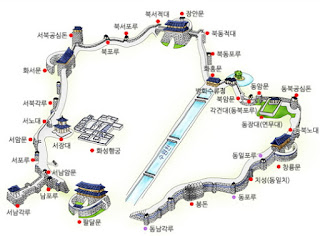Korea Tour : Jinhae Gunhangje Cherry Blossom Festival
Hi?
I am Eddie Kwon, a Korea tour interpreter and guide.
Today, I would like to introduce cherry blossom festival sites.
If you visit the places in the Spring, you will never forget the experience there.
Located in the port city of Changwon on the southeast coast, the district of Jinhae is one of the most popular places to celebrate the blooming of spring in South Korea. The usually sleepy city comes alive with colour and festivities, drawing more than 2 million visitors every year. Street stalls offer special food inspired by the season while concerts and fireworks are put on to provide further entertainment over the course of 10 days. Although much of the city is awash with a delicate pink hue, the best place to enjoy the beauty of the cherry blossoms is at the famous ‘Romance Bridge’ on the Yeojwacheon stream. Made popular by a hit Korean TV show titled Romance, the bridge is a particular draw for couples.
Another popular spot within easy reach of Jinhae is the now disused Gyeonghwa train station. It’s nicknamed ‘Cherry Blossom Road’ for the perfectly aligned cherry trees that run parallel along both sides of the train tracks. The train station has been closed since February 2015, which means visitors can amble along the 800-metre-long tracks while soaking up the beautiful colours of spring.
Due to Jinhae’s history as a naval base, the spring festival here originally started life as a small ceremony to commemorate the Korean Admiral Yi Sun-shin who was a key figure in defeating the Japanese during the 16th century Imjin War. This history is celebrated alongside the start of spring with a military parade complete with marching bands & honour guard shows.
Expected dates of bloom: First two weeks of April
Highlights: The rows of cherry blossom trees that line the famous Yeojwacheon Romance Bridge










